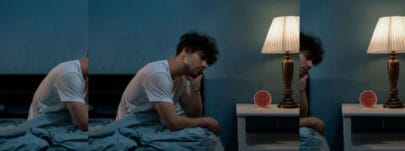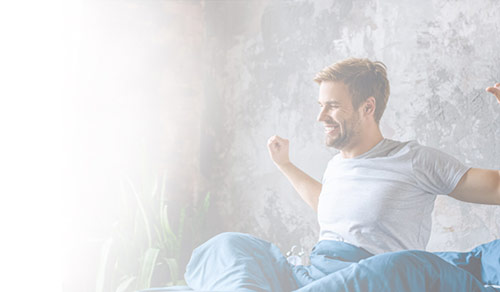
CPAP Machine Problems and Solutions
CPAP is widely viewed as the most effective treatment for obstructive sleep apnea. Continued compliance is crucial in preventing the return of your obstructive sleep apnea symptoms and for reducing the risk of health issues like heart disease and diabetes linked to the condition.
However, issues can arise with a CPAP device that may prompt you to quit the therapy. We shall look at eight of the more common CPAP problems and offer solutions that will help prevent the return of your obstructive sleep apnea symptoms.
- Dry Mouth
A dry mouth is one of the more common issues when using a PAP device. The pressurized air delivered through your mask can be dry which in turn can leave you with the feeling of a dry mouth in the morning. Most modern PAP machines are fitted with a heated humidifier that warms and moistens the air to prevent this.
If you breathe through your mouth you could also have this issue and wearing a full face mask may resolve this side effect of PAP. If you prefer using a nasal or nasal pillow mask, then a chin strap could offer a solution by ensuring you breathe through the nose.
- Exhaling Against Pressurized Air
The pressure of the air delivered by PAP is set to ensure it prevents the collapse of the upper airways. However, it can make exhaling against the air uncomfortable for some people. If the pressure settings cannot be lowered, a ramp setting on the PAP device may allow the pressure to gradually increase as you fall asleep.
It is important to discuss such issues with your health provider, as only they should make such adjustments. They may also recommend using a BiPAP device instead of CPAP. With BiPAP, the pressure setting is lower when you exhale compared to when you inhale.
- Difficulty Falling Asleep
Adjusting to a PAP device can take time. For some people, wearing a mask can feel claustrophobic too. Therefore, it is often beneficial to gradually get used to CPAP by wearing the mask for brief spells during the day, adding the hose, and turning the device on as you become more comfortable.
The more you wear the mask, the more you will get used to it and the quicker you will be prepared to use the device overnight as you sleep. Your health provider may also recommend a different mask type. Finding the right mask can help counter feelings of claustrophobia.
- Bloating
Bloating is never a comfortable feeling, but a fairly common side effect of a PAP device through swallowing air. As well as feeling bloated you can experience belching and flatulence that may leave you feeling embarrassed and reluctant to use PAP.
Work with your healthcare provider to ensure your mask is fitted correctly to give a proper seal. Your healthcare provider may also look at the possibility of changing the air pressure setting on your CPAP device. Sleeping at an angle using a wedge pillow may also help, as could anti-bloating medication.
- PAP Is Delivering Cold Air
If you are inhaling cold pressurized air it is likely a sign that one particular component of your PAP device is malfunctioning or broken. The heated humidifier ensures you inhale warmed and moistened air and you should check the temperature setting.
If the setting is correct and the water level in the humidifier chamber is not going down then the humidifier is not working properly and needs replacing. If the water level is dropping, but much more slowly, the issue could be that the hot plate is not warming up sufficiently enough.
- Noisy
Today’s PAP devices are much quieter than their earlier versions. However, if a noisy PAP device is affecting your sleep, first check that the filters are not blocked. If you replace filters often and still have distracting noise, you may want to inquire about an updated model or whether the device has developed a fault and needs replacing.
The mask can also be the source of noise. Check the seal of the mask for leaks or speak to your health provider to ensure you have the most suitable mask.
- Skin Irritation
Although the seal of the mask is crucial for the effectiveness of CPAP, a mask that is too tight can soon irritate the skin and leave unpleasant-looking red marks. Loosening the mask straps slightly can help, but the seal of the mask must remain intact.
On the flip side, too loose a mask and leaking air can also irritate your skin as well as get into your eyes and irritate them too. As weight is a major contributing risk factor for obstructive sleep apnea a mask may not fit as well as before due to weight loss. Your health provider can recommend a different mask size or style.
- PAP Device Is Aging
An aging PAP device can impact the effectiveness of your treatment. You may find it is not delivering the air pressure that is so important in maintaining clear airways as you sleep. The device may start to become noisier, guaranteed to annoy your sleep partner, let alone you.
In general, a PAP device is replaced every five years. Check with your health insurers to see if you are covered for such replacements. One plus is that each generation of PAP devices tends to have improved functions, are easier to operate, and are quieter than their predecessors.
Final Thoughts
CPAP machine problems can be frustrating, but they are usually easily solved. The mask is a key part of the treatment, and an ill-fitting mask can contribute to many of the issues discussed. You may need to try several masks before finding a correctly fitting mask that works for you.
Compliance with PAP therapy is crucial to reduce the risk of heart disease, stroke and diabetes linked to obstructive sleep apnea. However, the treatment is only as effective as the efficiency of its constituent parts. If you encounter CPAP device problems, solutions are at hand to help continue effective treatment.
Sources:
https://www.sleepapnea.org/cpap/troubleshooting-cpap-problems/
https://www.verywellhealth.com/signs-your-cpap-is-not-working-3015051
https://www.mayoclinic.org/diseases-conditions/sleep-apnea/in-depth/cpap/art-20044164



